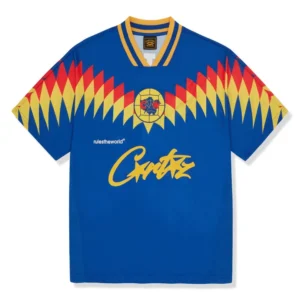The Ultimate NFC Digital Business Card Guide
Picture this: You’re at a bustling networking event, juggling a coffee cup, your phone, and a stack of paper business...
Picture this: You’re at a bustling networking event, juggling a coffee cup, your phone, and a stack of paper business cards that’s slowly dwindling. Someone asks for your contact information, and you scramble through your pockets only to realize you’ve run out. Sound familiar? There’s a better way, and it fits right in your wallet—or even on your phone case.
Welcome to the world of NFC digital business cards, where networking meets the 21st century. If you’ve ever felt the frustration of forgotten cards, outdated contact information, or simply the wastefulness of printing hundreds of cards you’ll never use, you’re about to discover a game-changing solution that’s transforming how professionals connect.
What Exactly Is an NFC Digital Business Card?
Digital Business Card UK use Near Field Communication technology to share your contact information wirelessly with a simple tap. Think of it as a smart business card that lives inside a physical card, tag, or even a phone accessory. When someone taps their smartphone against your NFC card, your contact details instantly appear on their device—no app download required.
The technology behind NFC is the same one that powers contactless payments like Apple Pay and Google Pay. It creates a secure connection between two devices when they’re brought within a few centimeters of each other. This means sharing your professional information is now as effortless as making a payment at your favorite coffee shop.
What makes NFC cards particularly impressive is their versatility. Unlike QR codes that require perfect lighting and a steady hand to scan, NFC cards work instantly with a single tap. They’re also more durable and professional-looking than their paper predecessors, making a memorable first impression that screams “tech-savvy professional.”
How NFC Technology Powers Modern Networking
Near Field Communication operates on radio frequency identification (RFID) principles, using electromagnetic fields to transfer data between devices. When you tap an NFC-enabled smartphone against an NFC business card, the phone’s NFC reader activates the chip embedded in the card, initiating a data exchange that happens in milliseconds.
The beauty of this technology lies in its simplicity and security. NFC only works at close range—typically within 4 centimeters—which prevents unauthorized access to your information. The chip in your card contains a tiny antenna and a microprocessor that stores your digital profile, including your name, title, company, phone number, email, website, and social media links.
Modern smartphones—both iPhone (iPhone 7 and later) and Android devices (most models from 2015 onwards)—come equipped with built-in NFC readers. This widespread compatibility means you can share your information with virtually anyone without worrying about whether they have the right app or technology. The recipient simply taps, and their phone does the rest, offering to save your contact information directly to their address book.
The Impressive Benefits of Going Digital
Switching to NFC digital business cards offers advantages that go far beyond convenience. For starters, you’ll never run out of cards again. Whether you’re attending one networking event or ten in a month, that single NFC card has you covered. This eliminates the anxiety of rationing cards at busy conferences or the disappointment of missing connections because you came unprepared.
Environmental sustainability is another compelling reason to make the switch. Americans alone print over 10 billion business cards annually, with 88% ending up in the trash within a week. By choosing digital, you’re significantly reducing paper waste and your carbon footprint. It’s a small change that makes a meaningful environmental impact while positioning you as a forward-thinking professional.
Perhaps the most valuable benefit is the ability to update your information in real-time. Changed jobs? New phone number? With traditional cards, you’d need to reprint everything. With NFC digital cards, you simply log into your profile and update your details—everyone you’ve shared with gets access to your current information automatically. This keeps your network connected to the real you, not the outdated version from six months ago.
Setting Up Your NFC Business Card Profile
Getting started with your NFC digital business card is surprisingly straightforward. Most providers offer user-friendly platforms where you can create your digital profile in minutes. Begin by selecting a reputable NFC card provider—popular options include Mobilo, Popl, Linq, and Dot—each offering different features and price points to match your needs.
Once you’ve received your physical NFC card or tag, you’ll typically activate it through the provider’s website or mobile app. This activation process links the card’s unique chip to your digital profile. From there, you’ll fill in your professional information: full name, job title, company name, phone number, email address, and physical address if relevant.
The customization options are where things get exciting. Most platforms allow you to add your company logo, choose color schemes, include a professional photo, and link to your LinkedIn, Instagram, Twitter, or portfolio website. Some advanced providers even let you embed video introductions, product catalogs, or appointment scheduling links. Think of it as creating a mini website dedicated to helping people connect with and remember you.
Choosing the Right NFC Card for Your Needs
The market offers several types of NFC products, each suited to different professional styles and preferences. Traditional card-style NFC business cards look and feel like regular business cards but with embedded technology. They’re perfect for professionals who appreciate the familiar ritual of exchanging cards while embracing modern functionality.
For those seeking something different, NFC tags come in various creative forms. Phone cases with built-in NFC chips let you share information by tapping phones together—ideal for the ultra-minimalist who doesn’t want to carry anything extra. Pop sockets, keychains, and wearable items like bracelets or badges offer alternative ways to keep your digital card accessible.
When selecting your NFC solution, consider durability and design. Metal cards offer a premium feel and exceptional longevity, though they cost more than plastic alternatives. PVC plastic cards provide excellent durability at a lower price point and can be printed with custom designs that reflect your brand. Some professionals even maintain multiple cards—a sleek metal one for high-stakes meetings and practical plastic versions for everyday networking.
Creating a Profile That Makes an Impact
Your digital business card profile is often someone’s first digital impression of you, so make it count. Start with a professional, high-quality profile photo that clearly shows your face. This helps people remember who you are after meeting dozens of people at an event. If your industry allows, showing some personality in your photo can make you more memorable and approachable.
Craft a compelling bio or tagline that quickly communicates what you do and the value you provide. Instead of just listing your job title, consider a value-focused statement like “Helping startups scale through strategic digital marketing” rather than simply “Digital Marketing Manager.” This gives people context and opens conversation opportunities.
Strategic link placement can transform your digital card from a simple contact repository into a powerful networking tool. Include links that support your professional goals: a portfolio showcasing your work, a calendar booking link for easy follow-ups, your latest presentation or white paper, or even a welcome video. Just be careful not to overwhelm recipients—focus on your most important 3-5 links that drive the actions you want people to take.
Best Practices for Sharing Your Digital Card
The physical act of sharing your NFC card should feel natural and confident. When meeting someone new, simply mention that you’d love to connect and offer to share your contact information via your digital card. Hold your card near their phone (usually the back, where the NFC reader is located) and wait for the tap notification. Most phones will vibrate or display a notification when the connection is made.
Timing matters when sharing your digital card. The end of a meaningful conversation is ideal—you’ve established rapport and mutual interest. Forcing your card on someone immediately after introductions can feel pushy. Similarly, busy environments where people are juggling food, drinks, or other items might not be the best moment. Watch for natural pauses in conversation or when someone explicitly asks how to stay in touch.
Don’t forget to follow up after sharing your card. The digital connection is just the beginning. Send a personalized message within 24-48 hours referencing something specific from your conversation. This reinforces the connection and increases the likelihood that your new contact will actually remember and engage with you. Your NFC card makes the initial exchange seamless, but meaningful relationships still require intentional follow-through.
Compatibility and Technical Considerations
One common concern about NFC business cards is device compatibility. The good news is that most modern smartphones support Digital Business Cards. iPhones from the iPhone 7 onwards can read NFC tags automatically in iOS 14 and later—no special action required. Android devices have supported NFC even longer, with most phones from 2015 onward featuring the technology.
For the small percentage of people with older phones or devices without NFC, many digital business cards include a QR code backup printed on the physical card. This ensures you can still share your information even if someone’s device doesn’t support tap-to-share functionality. It’s a thoughtful failsafe that ensures you never miss a networking opportunity due to technology limitations.
Battery life is another non-issue. NFC cards don’t require batteries or charging—the chip is passive, meaning it only activates when powered by the electromagnetic field from a nearby NFC reader. Your card will work consistently for years without any maintenance. The digital profile it links to is stored on cloud servers, accessible whenever someone taps your card, regardless of whether you’re nearby or even have internet access.
Customization and Branding Opportunities
Your NFC business card is an extension of your personal or company brand, and customization options allow you to make a strong visual statement. Many providers offer design templates as starting points, but true differentiation comes from custom designs that reflect your unique brand identity. Include your company colors, logo, and typography that matches your other marketing materials for a cohesive professional presence.
The physical card itself offers creative opportunities beyond the digital profile. Consider materials that align with your brand values—bamboo or recycled materials for eco-conscious businesses, sleek metal for luxury brands, or transparent acrylic for creative industries. Some companies even incorporate unique shapes, though standard credit card sizing ensures wallet compatibility.
Your digital profile’s visual design is equally important. Use brand-consistent colors and fonts in your profile page. Add a custom background image or pattern that reinforces your industry or personality. Include your logo prominently. The goal is creating an immediate visual connection between your physical presence, your card, and your digital profile, making you more memorable and recognizable across all touchpoints.
Measuring Success and Analytics
One of the hidden advantages of NFC digital business cards is the ability to track engagement and measure networking effectiveness. Most quality providers offer analytics dashboards showing how many people have tapped your card, when they did so, which links they clicked, and where geographically these interactions occurred. This data transforms networking from a shot-in-the-dark activity into a measurable business function.
These insights can help you optimize your networking strategy. If you notice that certain events generate more taps and follow-through than others, you can focus your time on higher-value opportunities. If particular links on your profile get consistently ignored, you can remove or replace them with more relevant content. Analytics turn every interaction into a learning opportunity.
Some professionals use this data for strategic follow-up. Knowing that someone not only saved your contact but also visited your portfolio or clicked your booking link tells you they’re genuinely interested. This information helps you prioritize follow-ups and tailor your outreach based on demonstrated interest rather than guesswork. It’s like having a networking assistant that tracks every interaction and helps you optimize your approach.
Security and Privacy Considerations
When it comes to sharing professional information digitally, security and privacy rightfully concern many people. NFC technology itself is quite secure—the short-range requirement means someone must physically tap your card with their device, preventing remote data theft. Unlike information broadcast over Wi-Fi or Bluetooth, NFC operates in a closed, point-to-point connection.
You maintain complete control over what information you share on your digital profile. Unlike LinkedIn or other social platforms where information is publicly accessible, your NFC card profile only becomes available when you physically give someone access by allowing them to tap your card. You can choose to include only professional contact information, leaving personal details completely private.
Most reputable NFC business card providers use encrypted connections and secure servers to store your profile information. Look for providers that clearly outline their data protection policies and offer features like the ability to delete or deactivate cards if they’re lost. Some platforms even allow you to see who has accessed your information and when, giving you transparency and control over your digital networking footprint.
Cost Comparison: Digital vs. Traditional Cards
Let’s talk numbers. Traditional business cards typically cost between $20-$100 per 500 cards, depending on quality and design complexity. If you network actively and attend multiple events yearly, you might go through several thousand cards, not to mention the cost of reprinting whenever information changes. Over a few years, this easily adds up to several hundred dollars.
NFC digital business cards require a higher upfront investment—typically ranging from $10 for basic models to $100+ for premium metal cards with advanced features. Many providers also charge annual subscription fees between $5-$50 for profile hosting, analytics, and unlimited updates. However, this single investment serves you indefinitely, with no reprinting costs when details change.
The return on investment extends beyond monetary savings. Consider the environmental cost savings, the time saved not designing and ordering new cards, and the professional image of being tech-forward. Factor in the networking opportunities you won’t miss because you ran out of cards, and the enhanced follow-through from analytics-driven follow-ups. When viewed holistically, NFC cards often prove more economical and effective than their traditional counterparts within the first year.
Integration with CRM and Marketing Tools
Modern NFC business card platforms often integrate with popular Customer Relationship Management (CRM) systems and marketing automation tools. This means the contacts you gather through networking events can automatically sync with your Salesforce, HubSpot, Zoho, or other CRM platform. This eliminates the tedious manual data entry that often causes networking leads to fall through the cracks.
These integrations enable sophisticated follow-up workflows. When someone taps your card, they can automatically be added to an email sequence, receive a welcome message, or be tagged for specific follow-up campaigns. For sales professionals, this automation ensures no lead goes cold and every connection receives appropriate nurturing based on how they interacted with your digital profile.
Some advanced platforms even offer two-way exchange functionality, where both parties can instantly share and save each other’s information simultaneously. This mutual exchange mimics the traditional card swap but happens digitally in seconds. Both contacts are automatically added to each person’s CRM system, tagged with the event or context where you met, creating a complete record of the interaction without either party lifting a finger.
Common Mistakes to Avoid
Even with the simplicity of NFC cards, certain mistakes can undermine their effectiveness. The most common error is creating an information dump—trying to include every possible detail about yourself or your business. Your digital card should be focused and strategic, highlighting the most important ways to connect and engage. Too many links and options actually decrease engagement as people feel overwhelmed.
Another pitfall is neglecting to update your profile regularly. The whole point of digital cards is maintaining current information, yet some professionals set up their profile once and forget about it. Review your information quarterly, update your photo periodically, and refresh links as your priorities evolve. An outdated digital card is just as problematic as an outdated paper one.
Failing to explain what you’re doing can create awkward moments. Not everyone is familiar with NFC technology, so a quick, friendly explanation—”I use a digital business card—just tap your phone here”—helps people feel comfortable. Similarly, not having a backup plan for older phones can leave you stuck. Always have the QR code visible on your physical card or be ready to manually share information when needed.
The Future of Digital Networking
NFC technology is just the beginning of how networking will evolve. Emerging trends include augmented reality business cards that display 3D holograms or interactive content when viewed through a smartphone camera. Some companies are experimenting with blockchain-verified digital credentials that provide instant proof of qualifications and endorsements.
Artificial intelligence is also entering the networking space. Imagine NFC cards that remember everyone you’ve met, provide conversation reminders, and suggest optimal follow-up timing based on engagement patterns. Some platforms are already testing AI-powered features that analyze your networking effectiveness and provide personalized recommendations for improvement.
Wearable technology represents another frontier. As smartwatches and AR glasses become more sophisticated, NFC chips embedded in rings, watches, or even clothing could enable contact sharing with a simple handshake or gesture. The goal is making professional networking so seamless and natural that technology becomes invisible, leaving only genuine human connection at the forefront.
Making the Switch: Your Action Plan
Ready to embrace NFC digital business cards? Start by researching providers that align with your needs and budget. Read reviews, compare features, and look for free trials that let you test the platform before committing. Pay attention to customization options, analytics capabilities, CRM integrations, and customer support quality.
Once you’ve selected a provider, invest time in creating a compelling digital profile. Use high-quality images, write clear and engaging copy, and strategically choose links that support your networking goals. Test your profile by sharing it with colleagues or friends and asking for honest feedback about clarity, professionalism, and functionality.
Order your physical cards and give yourself time to practice the tap-and-share motion before your next networking event. The action should feel natural and confident, not awkward or fumbling. Consider ordering a few different styles to see which feels most comfortable and receives the best response. Remember, your first NFC card doesn’t have to be perfect—the beauty of digital is that you can continuously refine and optimize based on real-world results.
Frequently Asked Questions
Do NFC business cards work with all smartphones?
Most modern smartphones support NFC technology. iPhones from iPhone 7 and newer with iOS 14+ can read NFC tags automatically without any special app. Android phones from approximately 2015 onwards typically include NFC capability. For older phones without NFC, most digital cards include a printed QR code as a backup option, ensuring you can still share your information with virtually anyone.
Can I update my information after sharing my NFC card?
Absolutely! This is one of the biggest advantages of NFC digital cards. You can log into your provider’s platform anytime and update your contact information, links, photos, or any other profile details. Anyone who previously tapped your card will automatically see your updated information the next time they access your profile—no need to track down people and give them new cards.
Are NFC business cards secure?
Yes, NFC technology is quite secure. It only works at very close range (typically 1-4 centimeters), so someone must physically tap your card with their device. The information isn’t constantly broadcasting like Bluetooth or Wi-Fi. You control exactly what information appears on your profile, and reputable providers use encrypted connections and secure servers to protect your data.
How long do NFC business cards last?
The physical NFC chip in your card can function for many years—often 5-10 years or more—since it requires no battery or power source. The chip is passive, activating only when near an NFC reader. The durability of the card itself depends on the material (metal, plastic, etc.) and how carefully you treat it. Most cards easily outlast traditional paper cards many times over.
Can I have multiple NFC cards with the same information?
Yes, most providers allow you to order multiple cards linked to the same digital profile. This is useful if you want different form factors (a traditional card for your wallet, a tag on your phone case, a keychain version) or if you want backup cards. Some professionals even create multiple profiles for different contexts—one for their primary business and another for side projects or personal branding.
What happens if I lose my NFC card?
If you lose your card, you can typically deactivate it through your provider’s platform to ensure no one can use it to access your information. Since your profile lives in the cloud rather than on the card itself, your data isn’t lost with the physical card. Simply order a replacement, and it will link to your existing profile with all your information intact. Some providers even offer tracking features to see if your card has been used.
Do recipients need an app to receive my information?
In most cases, no special app is required. When someone taps their NFC-enabled phone against your card, their device automatically detects the signal and displays a notification with your contact information. They can then choose to save your details to their contacts with a single tap. The experience is seamless and native to their phone, requiring no downloads or account creation on their part.
Can I use NFC cards for purposes beyond business networking?
Definitely! While business networking is the primary use case, NFC technology has many creative applications. Some people create personal cards for social networking, dating profiles, or sharing emergency contact information. Real estate agents use them on property signs, event organizers embed them in badges for instant attendee information, and artists use them to share portfolios. The versatility is limited only by your imagination.







